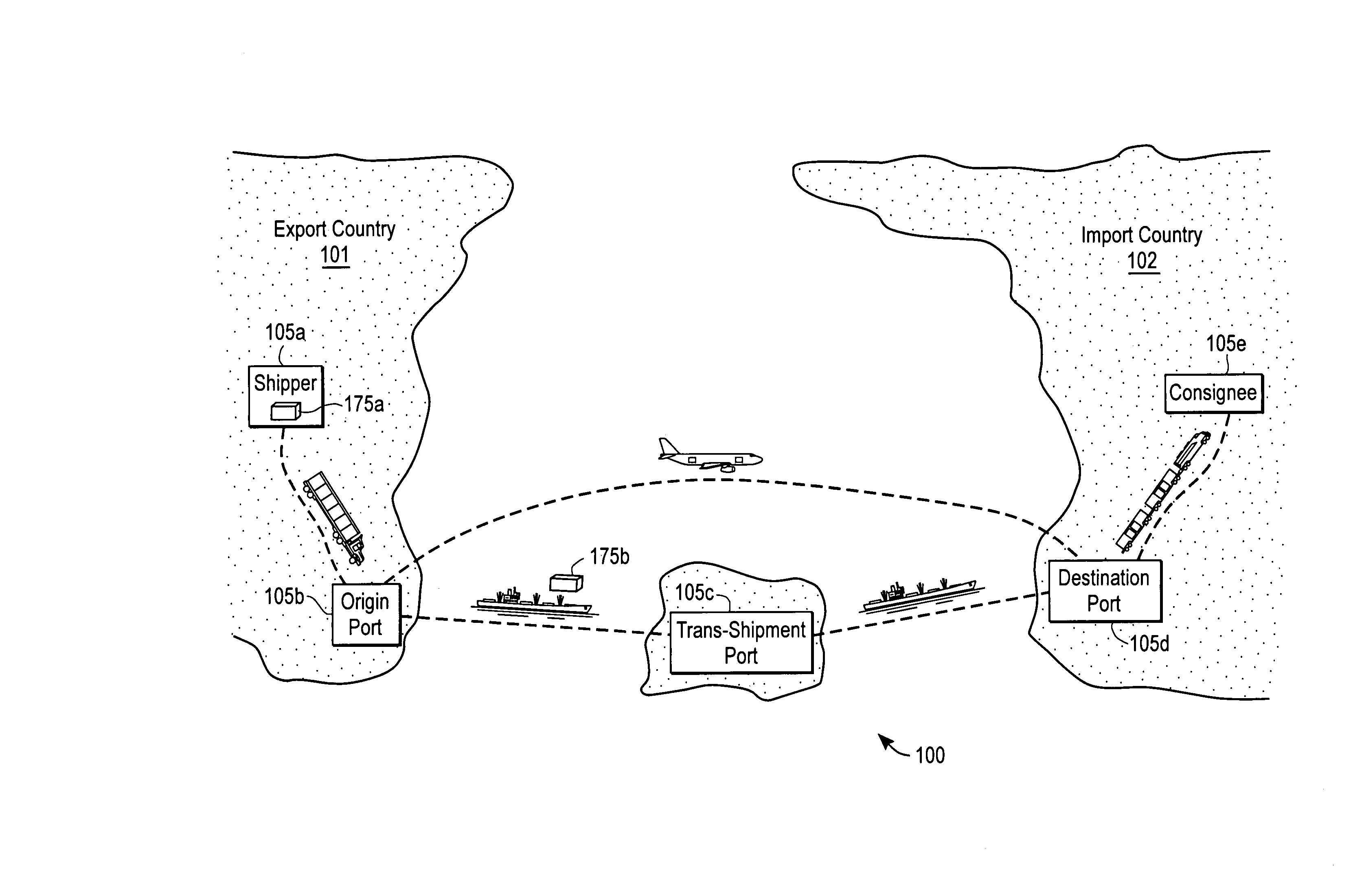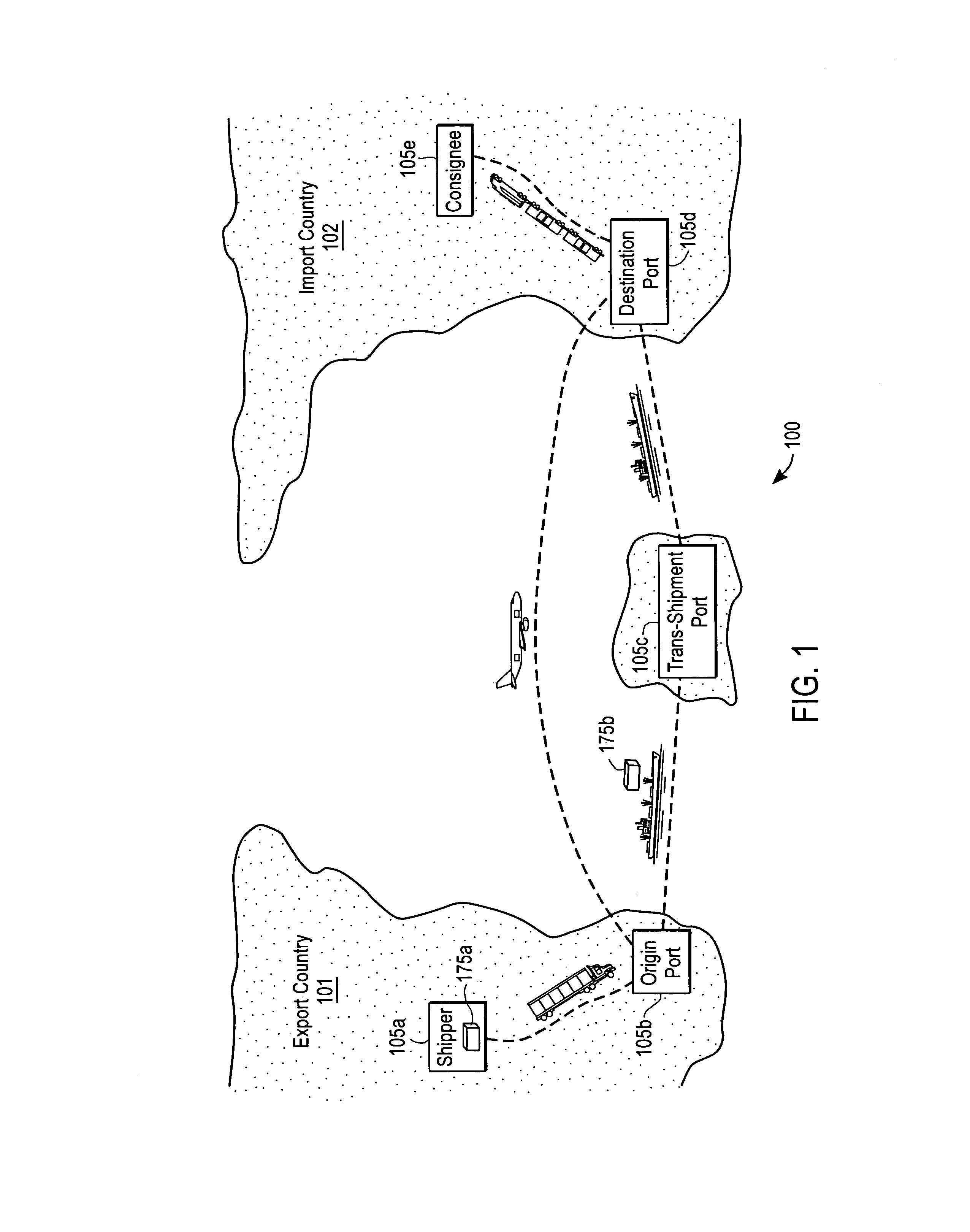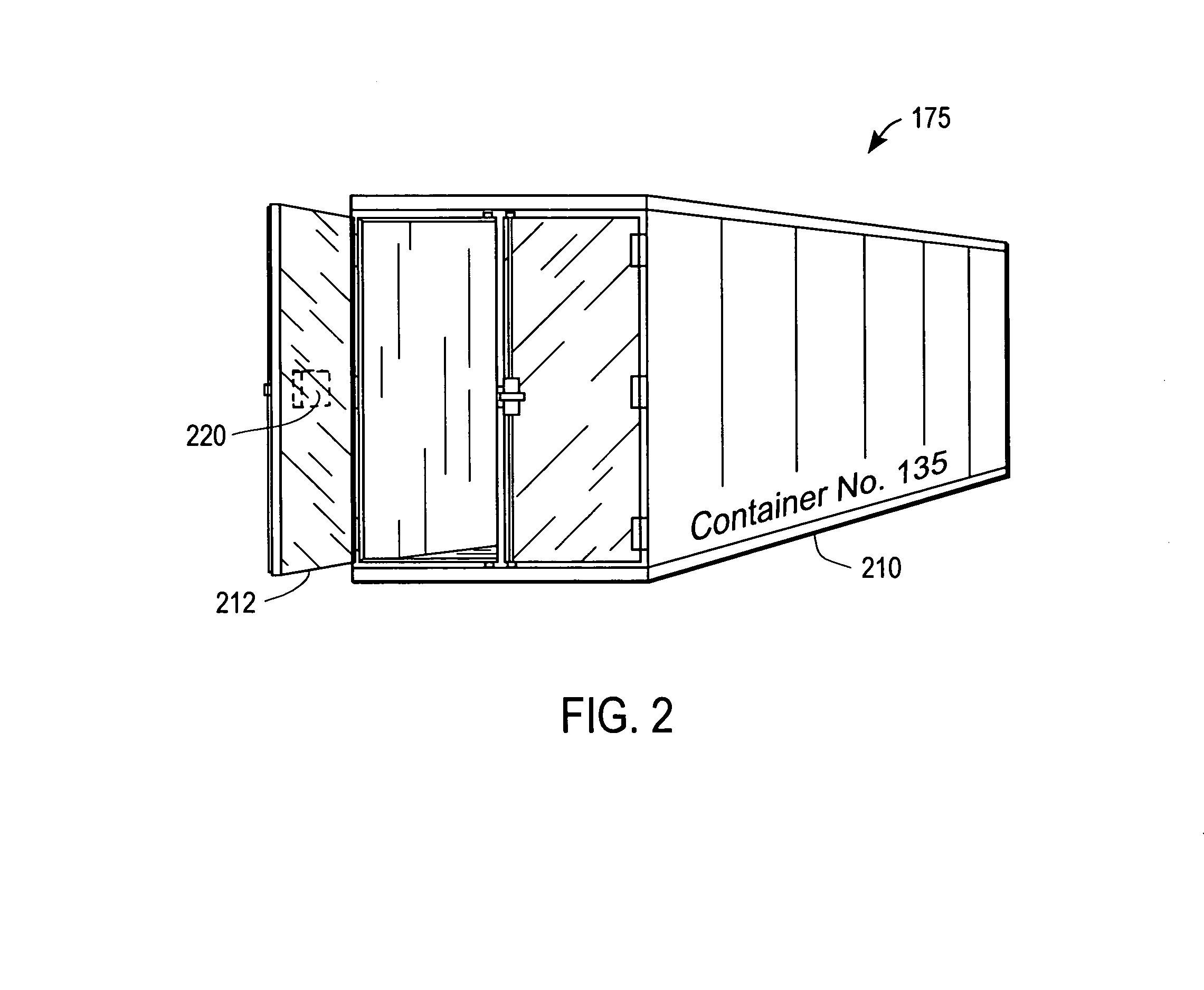State monitoring of a container
a container and state monitoring technology, applied in the field of tracking containers, can solve the problems of central system limited visibility of containers in the global supply chain, failure to provide an evaluation of containers contents, and information failure to account for events occurring between checkpoints
- Summary
- Abstract
- Description
- Claims
- Application Information
AI Technical Summary
Benefits of technology
Problems solved by technology
Method used
Image
Examples
Embodiment Construction
[0023]A system and method for monitoring a state of a container is disclosed. The system according to some embodiments of the present invention is set forth in FIGS. 1–5, and a method operating therein, according to some embodiments of the present invention, is set forth in FIGS. 6–7.
[0024]The accompanying description is for the purpose of providing a thorough explanation with numerous specific details. Of course, the field of container and cargo tracking and monitoring is such that many different variations of the illustrated and described features of the invention are possible. Those skilled in the art will thus undoubtedly appreciate that the invention can be practiced without some specific details described below, and indeed will see that many other variations and embodiments of the invention can be practiced while still satisfying its teachings and spirit. Accordingly, the present invention should not be understood as being limited to the specific implementations described belo...
PUM
 Login to View More
Login to View More Abstract
Description
Claims
Application Information
 Login to View More
Login to View More - R&D
- Intellectual Property
- Life Sciences
- Materials
- Tech Scout
- Unparalleled Data Quality
- Higher Quality Content
- 60% Fewer Hallucinations
Browse by: Latest US Patents, China's latest patents, Technical Efficacy Thesaurus, Application Domain, Technology Topic, Popular Technical Reports.
© 2025 PatSnap. All rights reserved.Legal|Privacy policy|Modern Slavery Act Transparency Statement|Sitemap|About US| Contact US: help@patsnap.com



